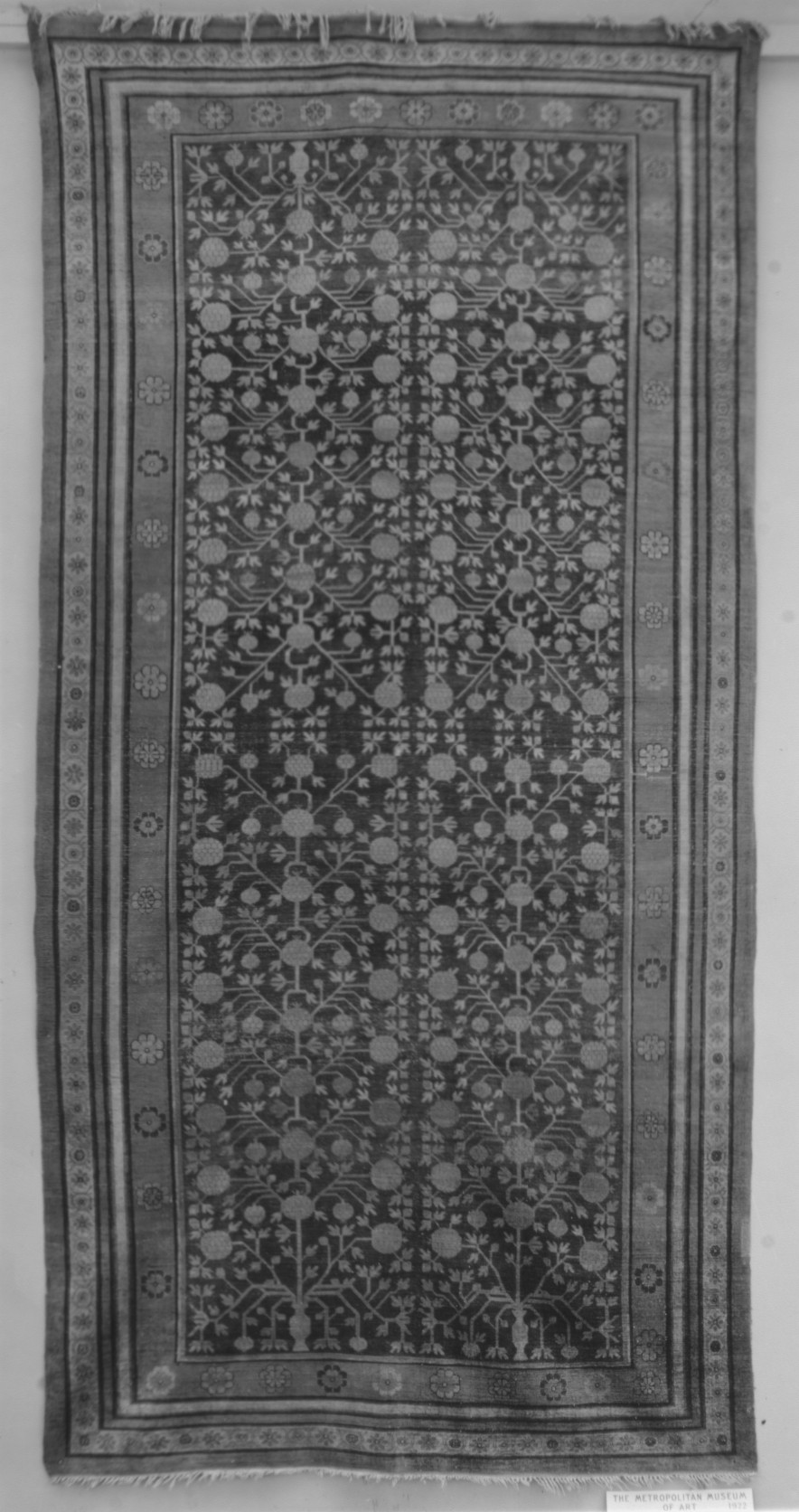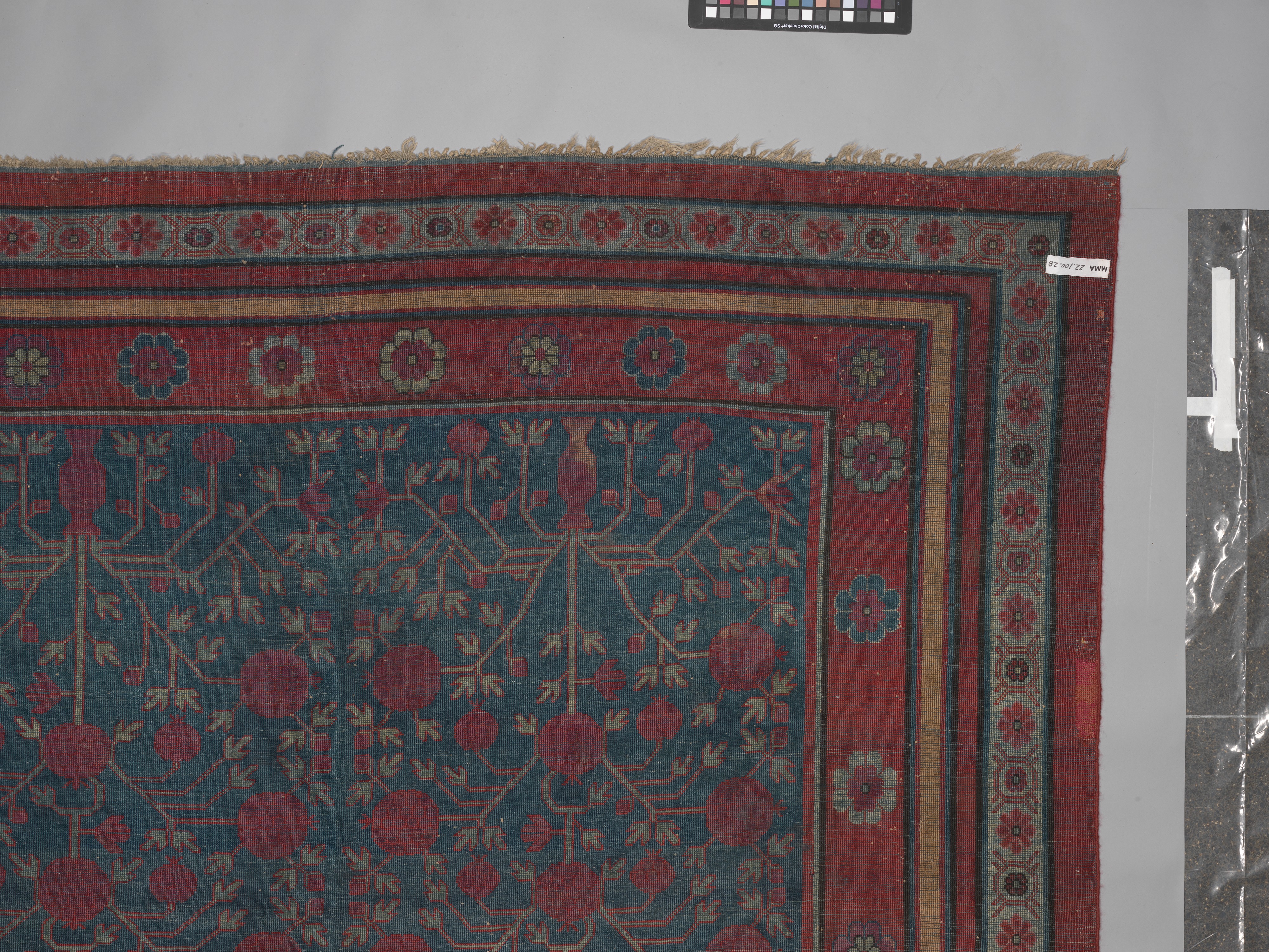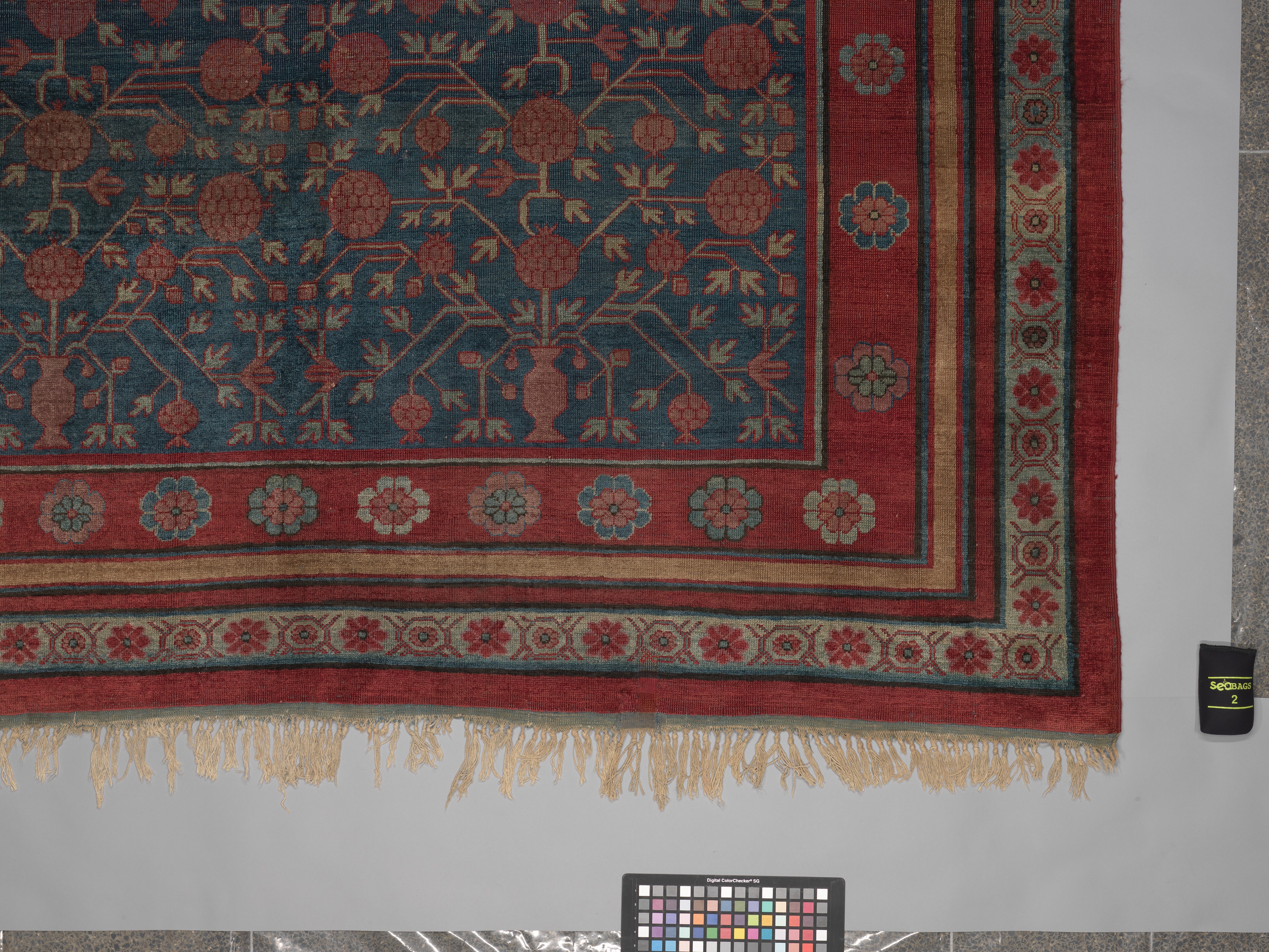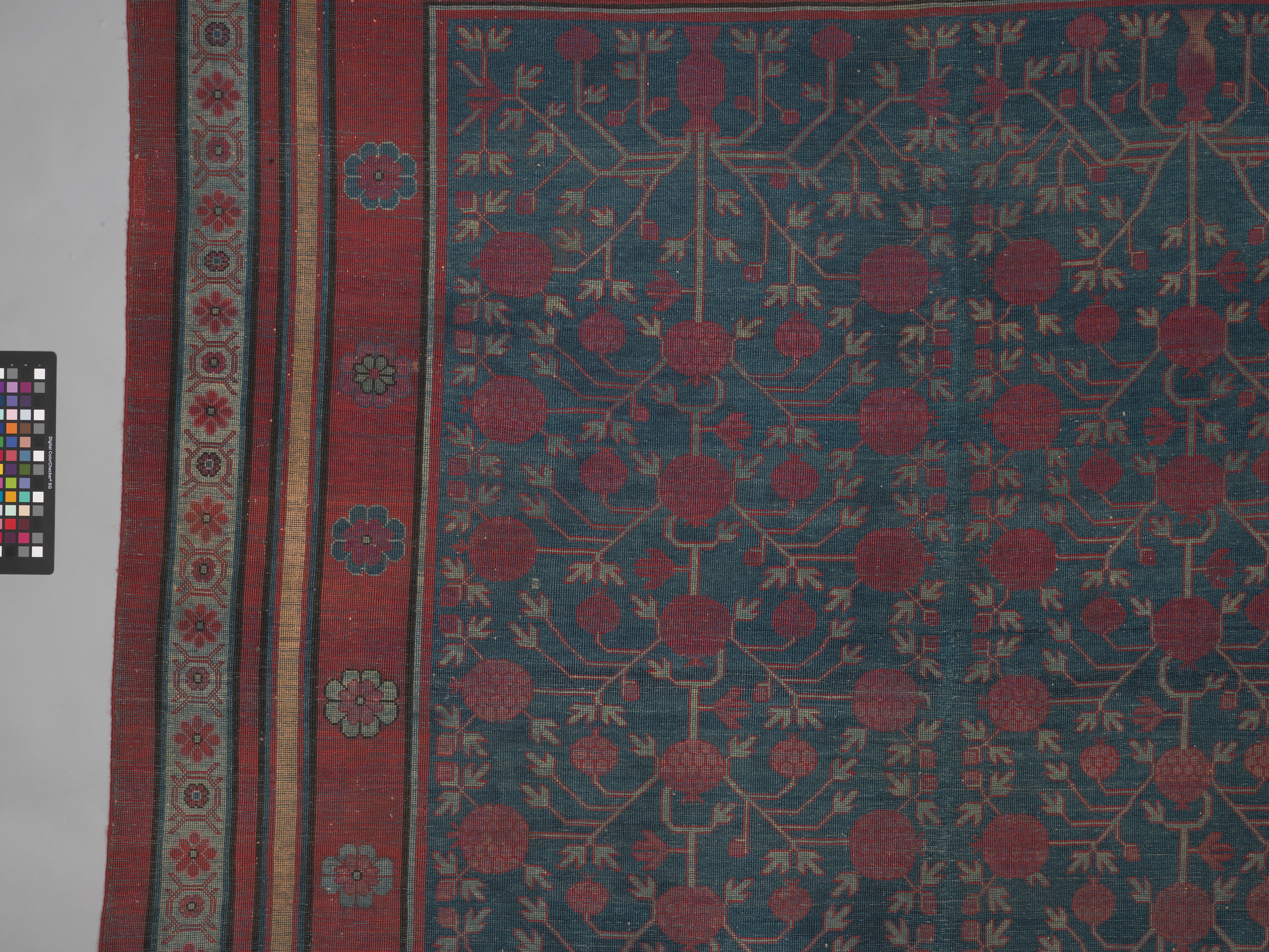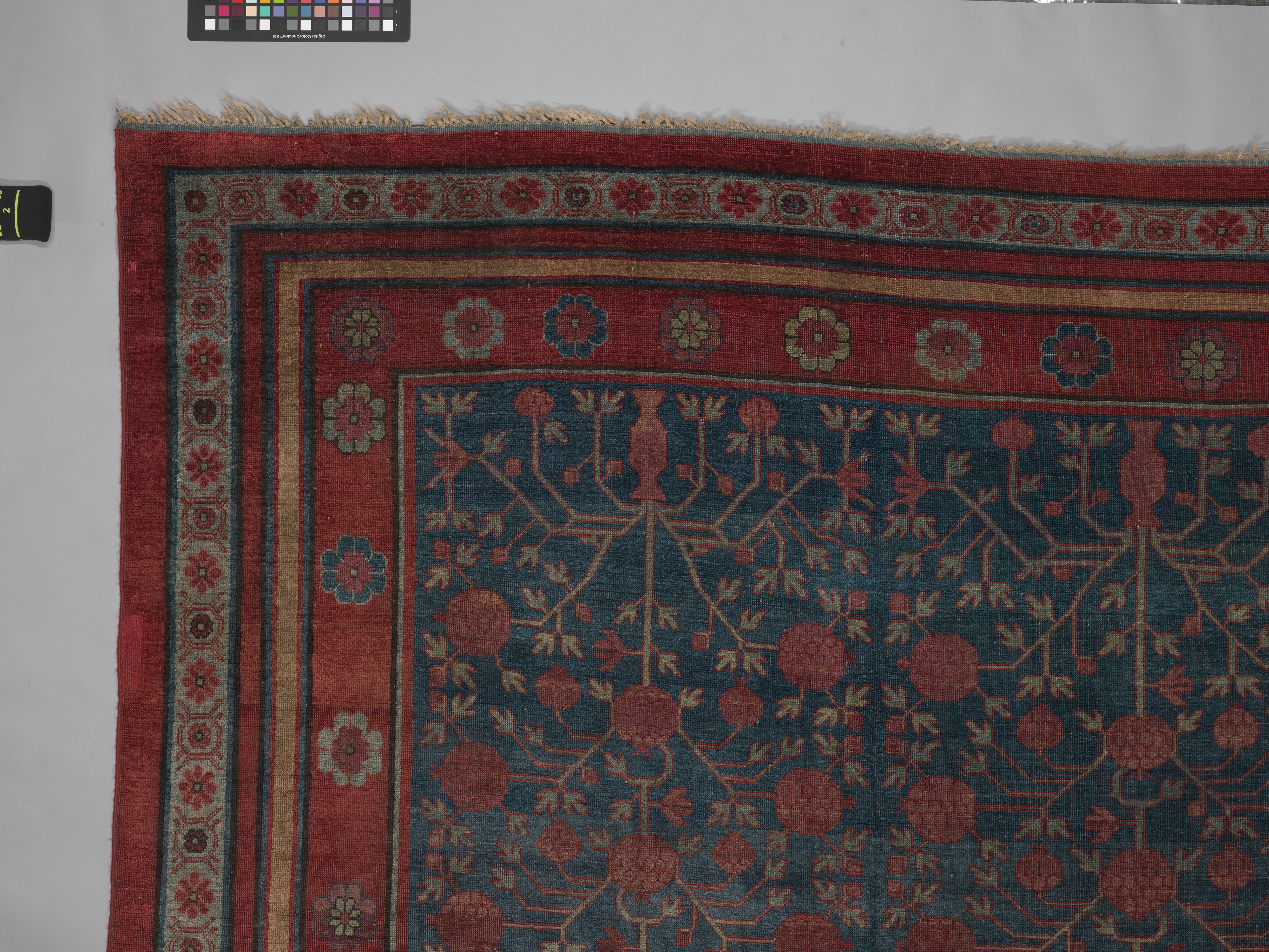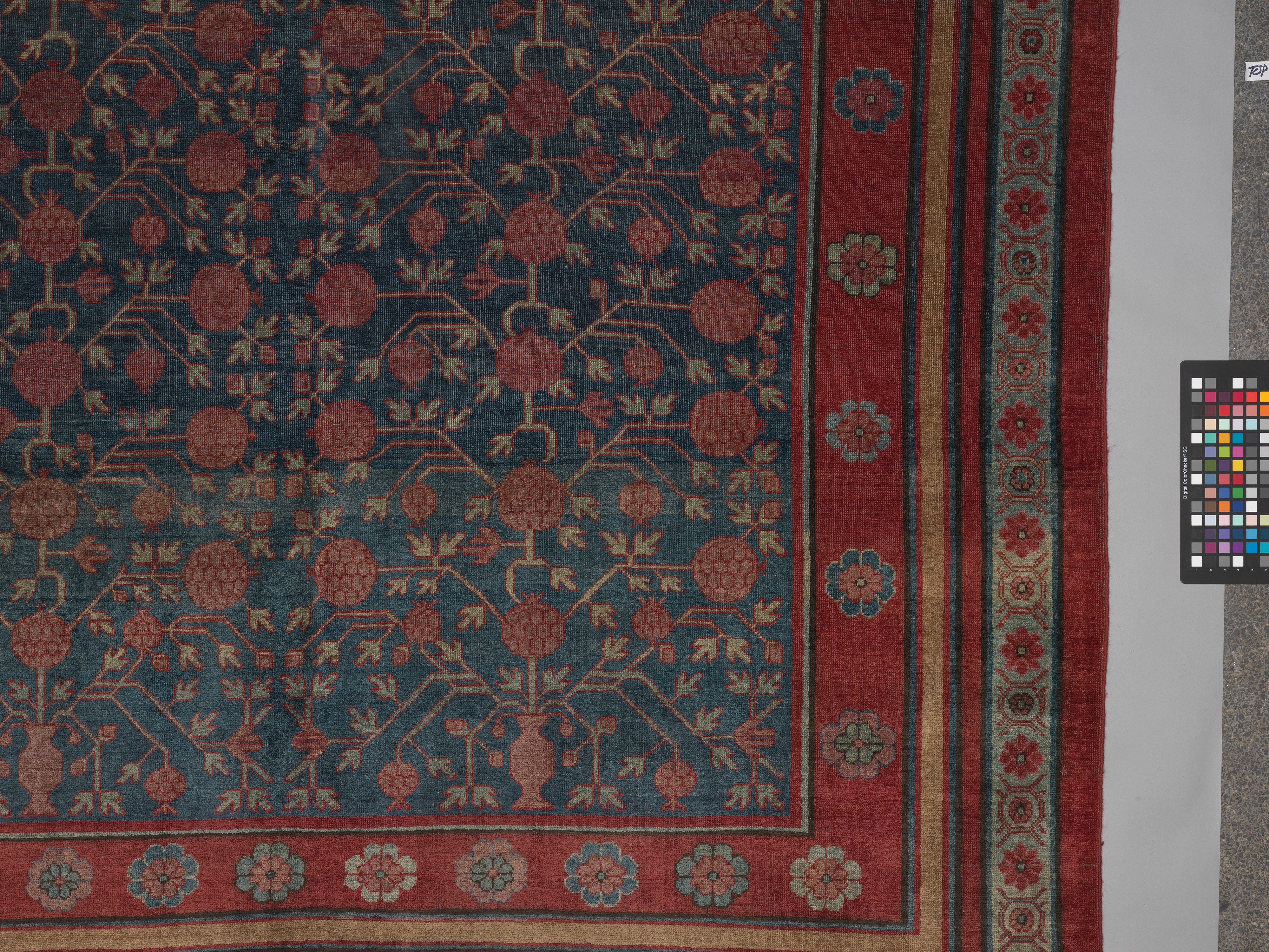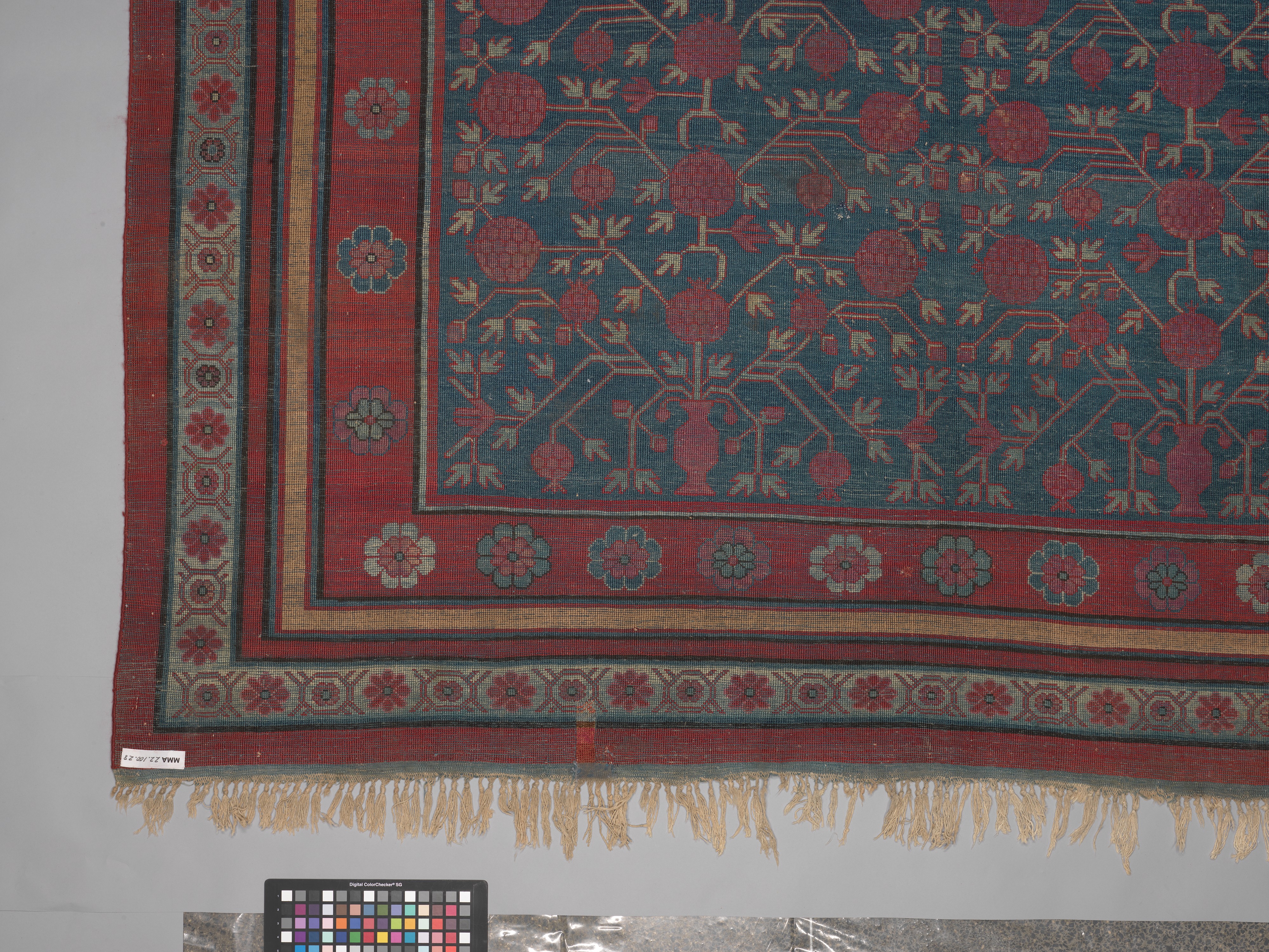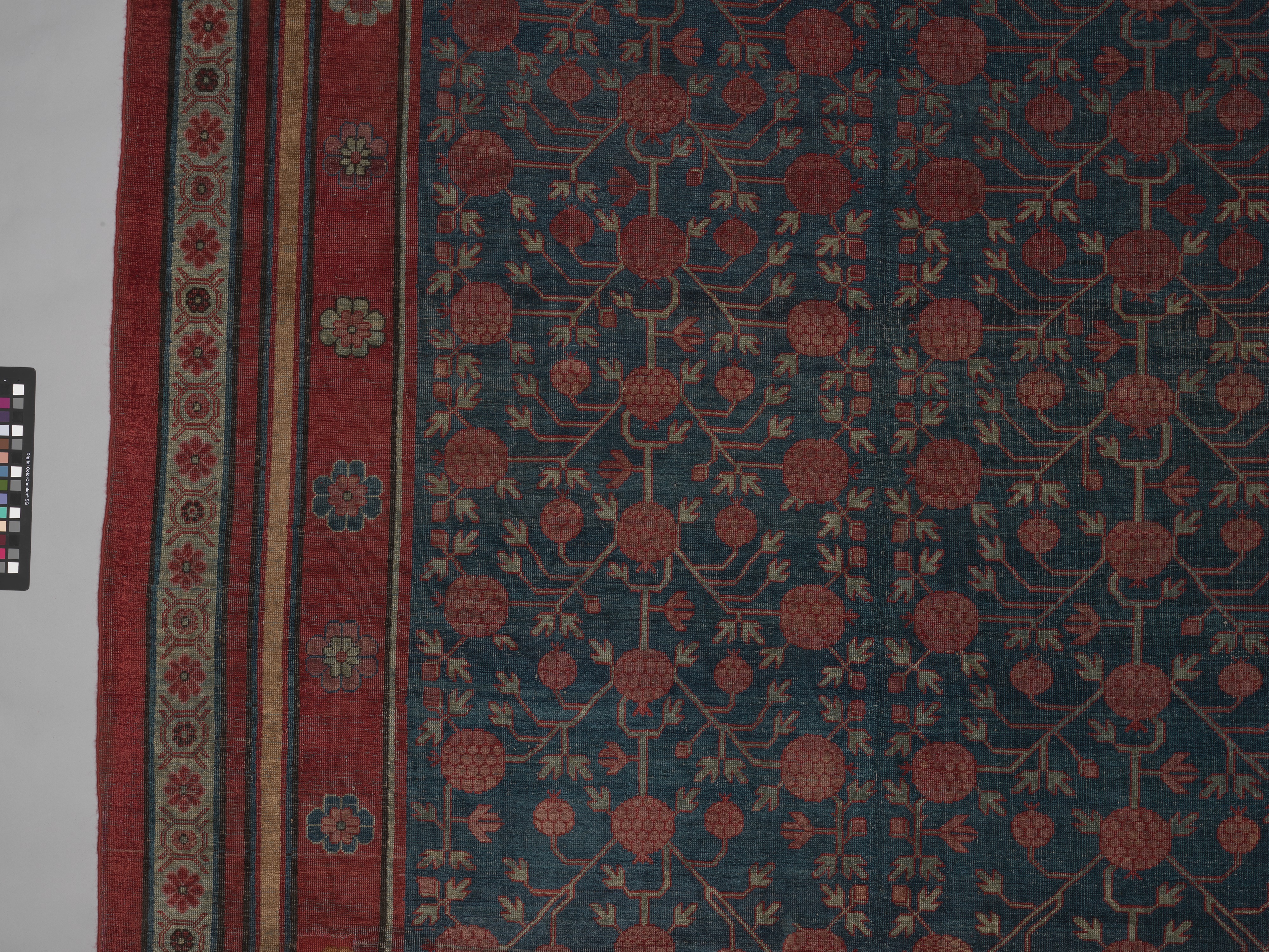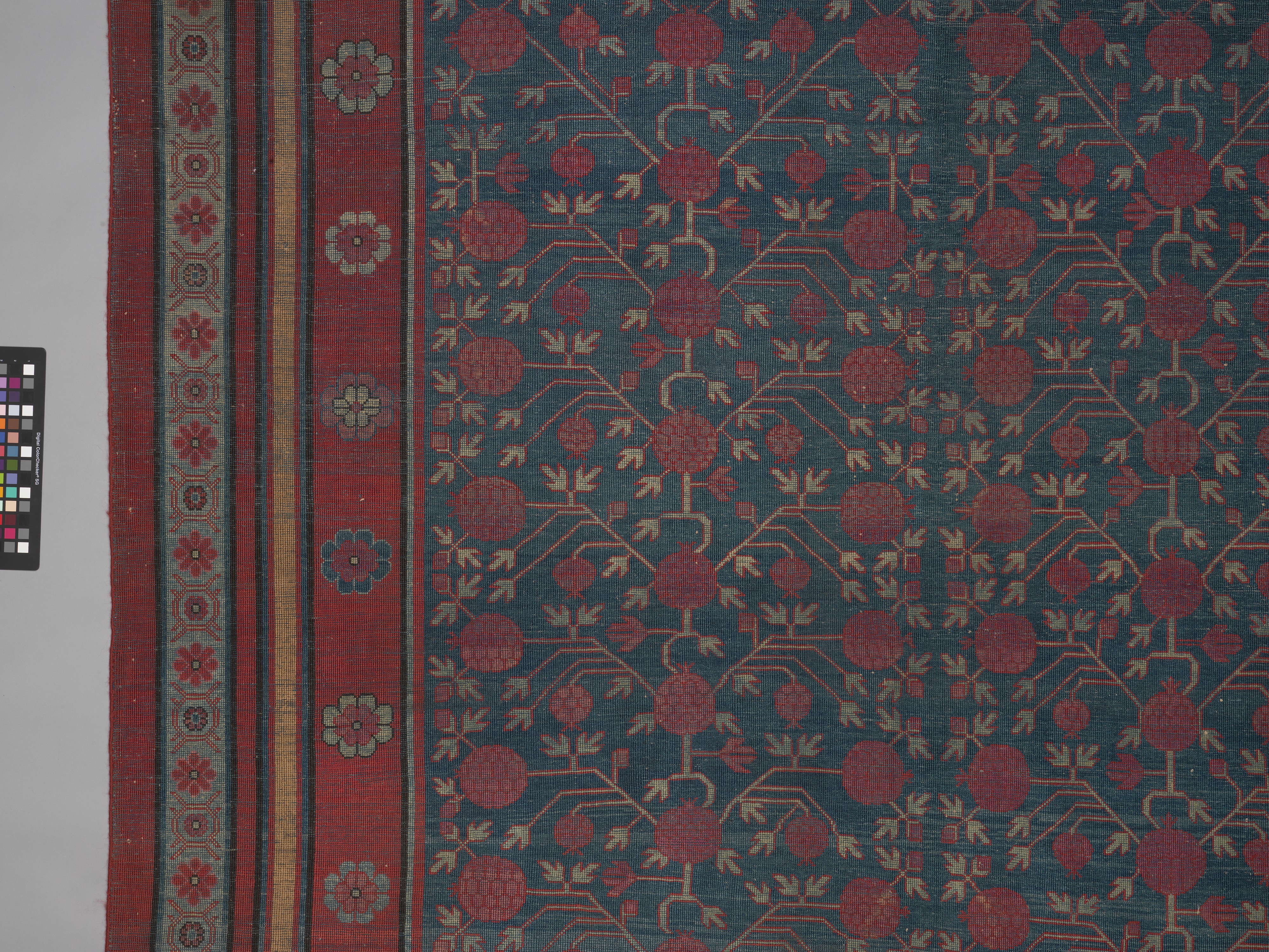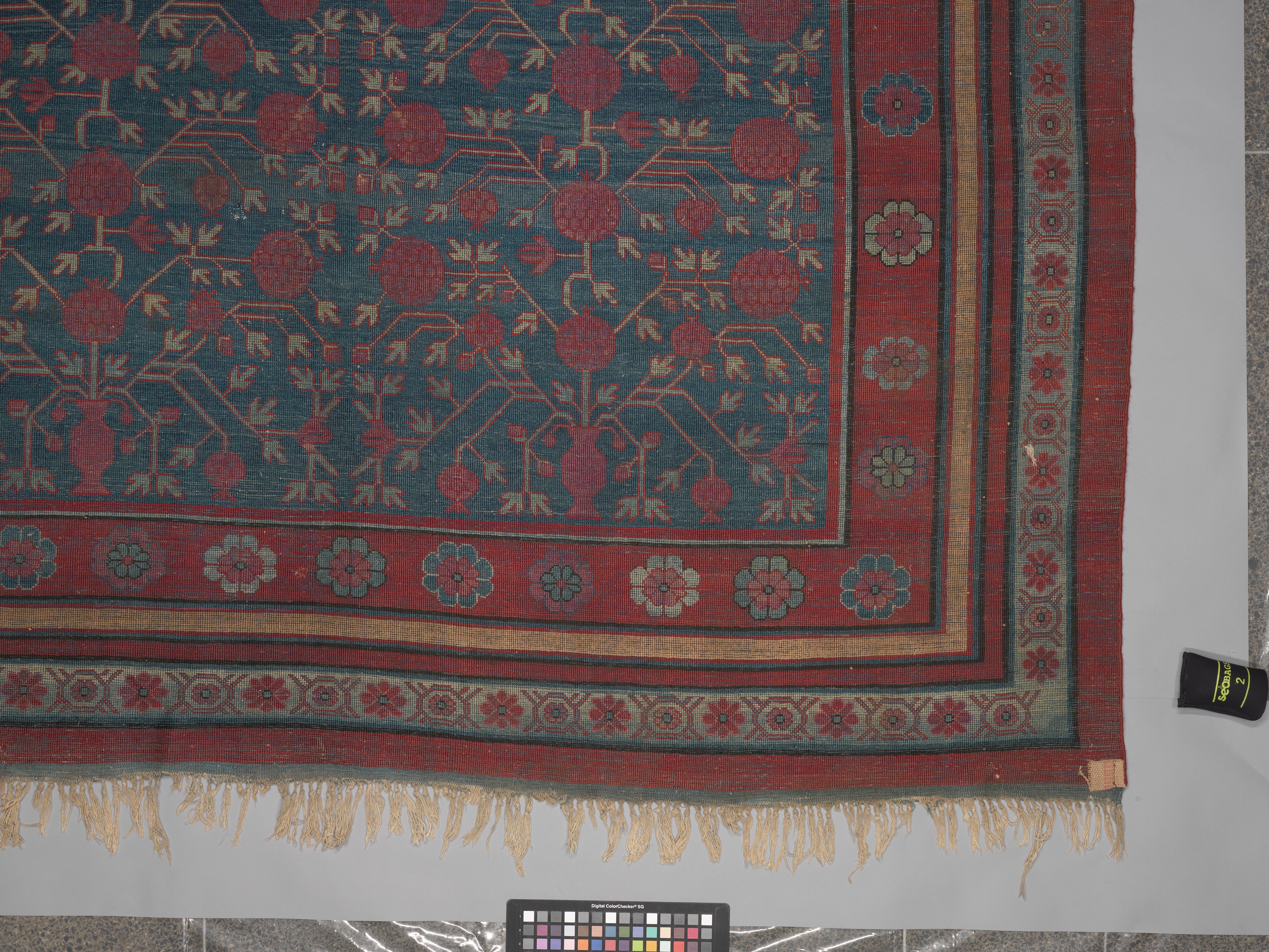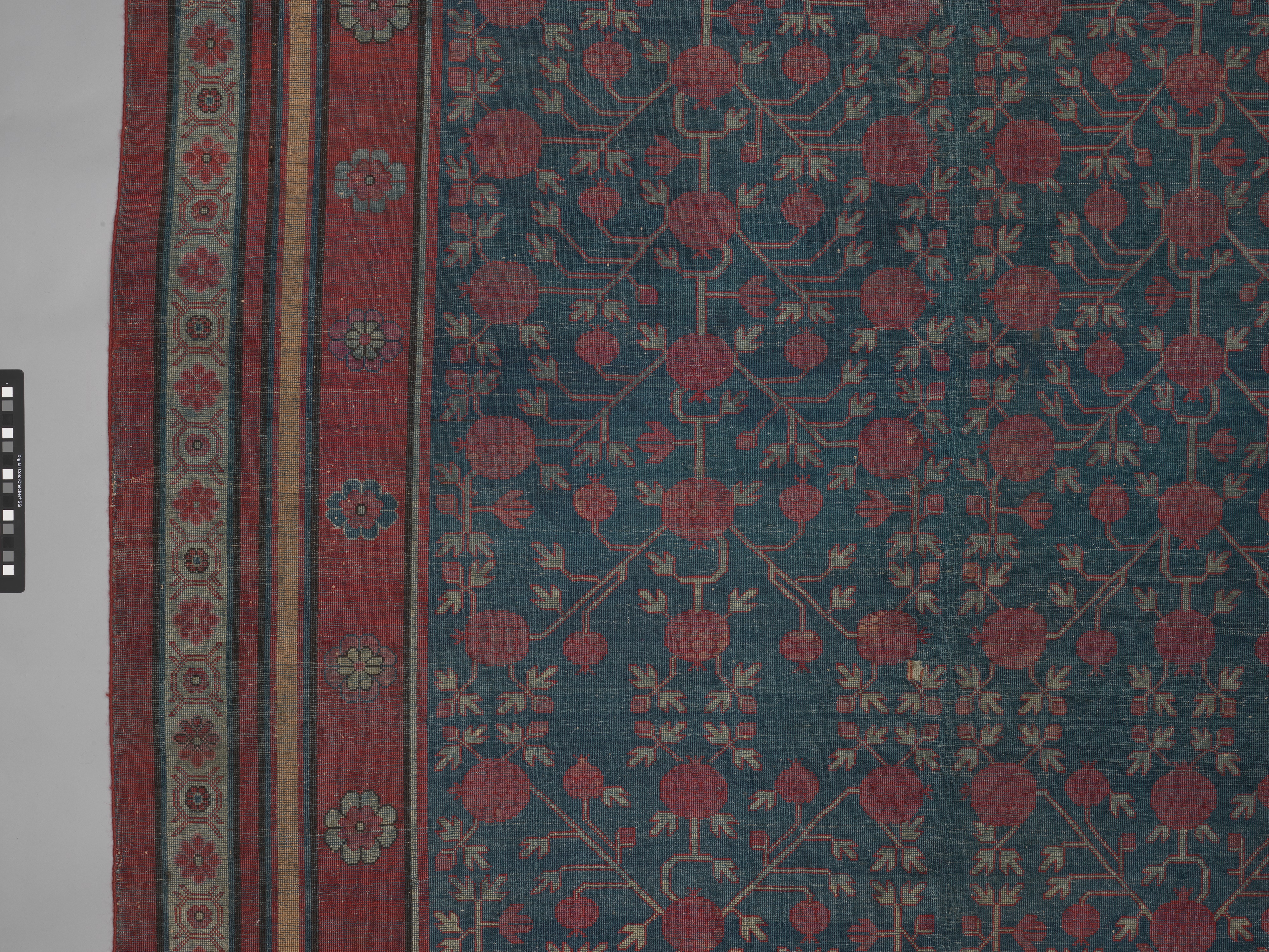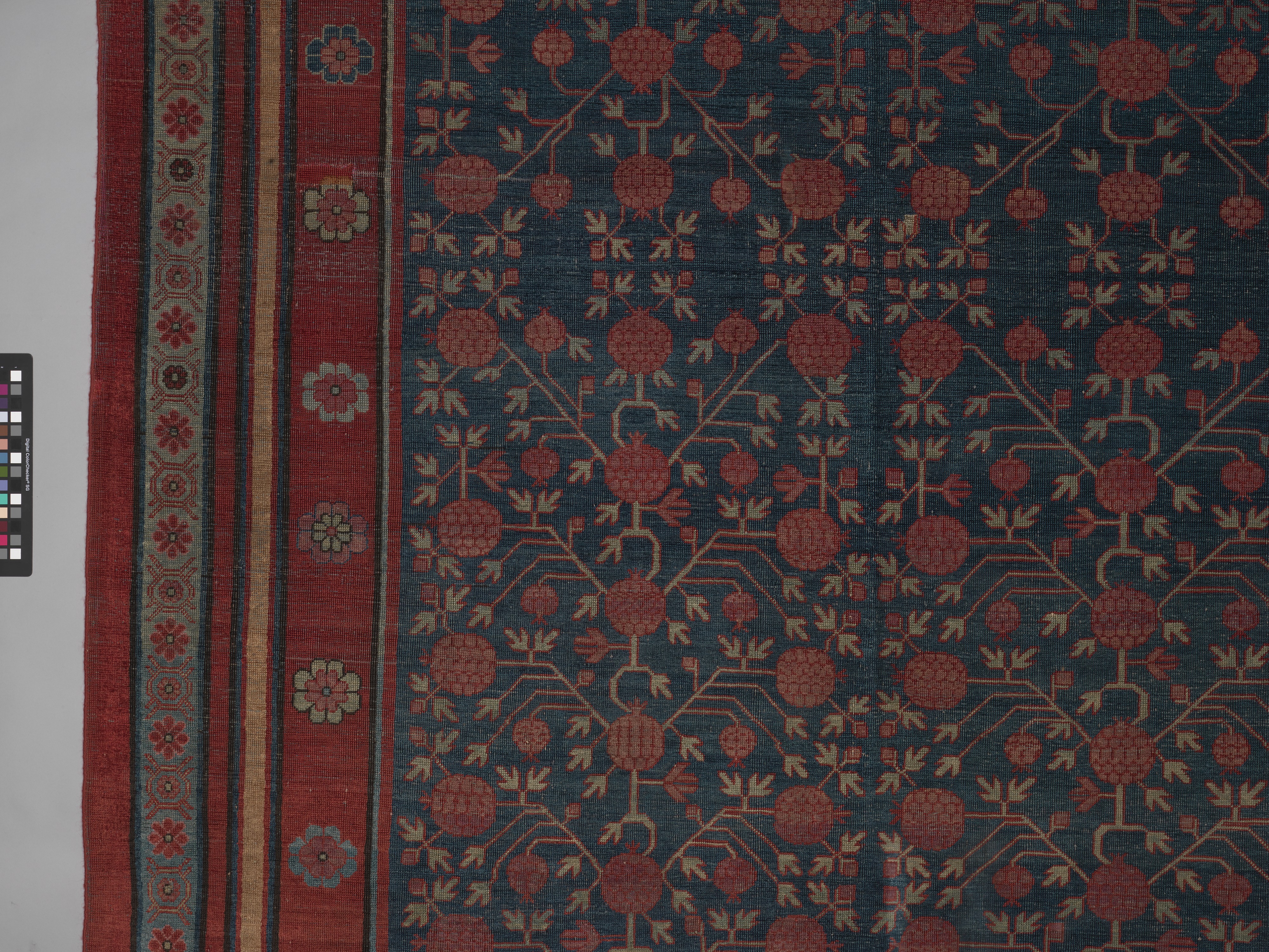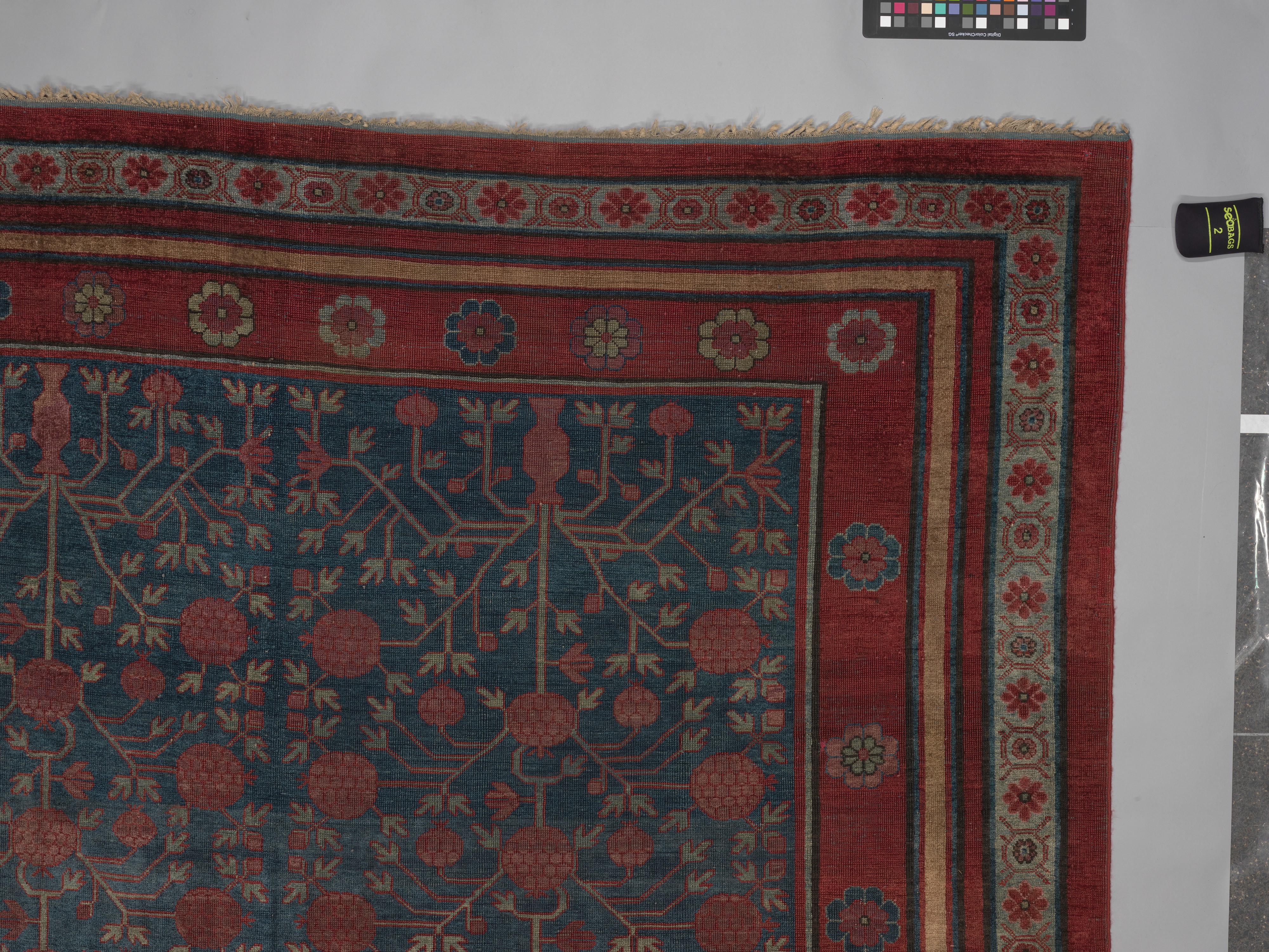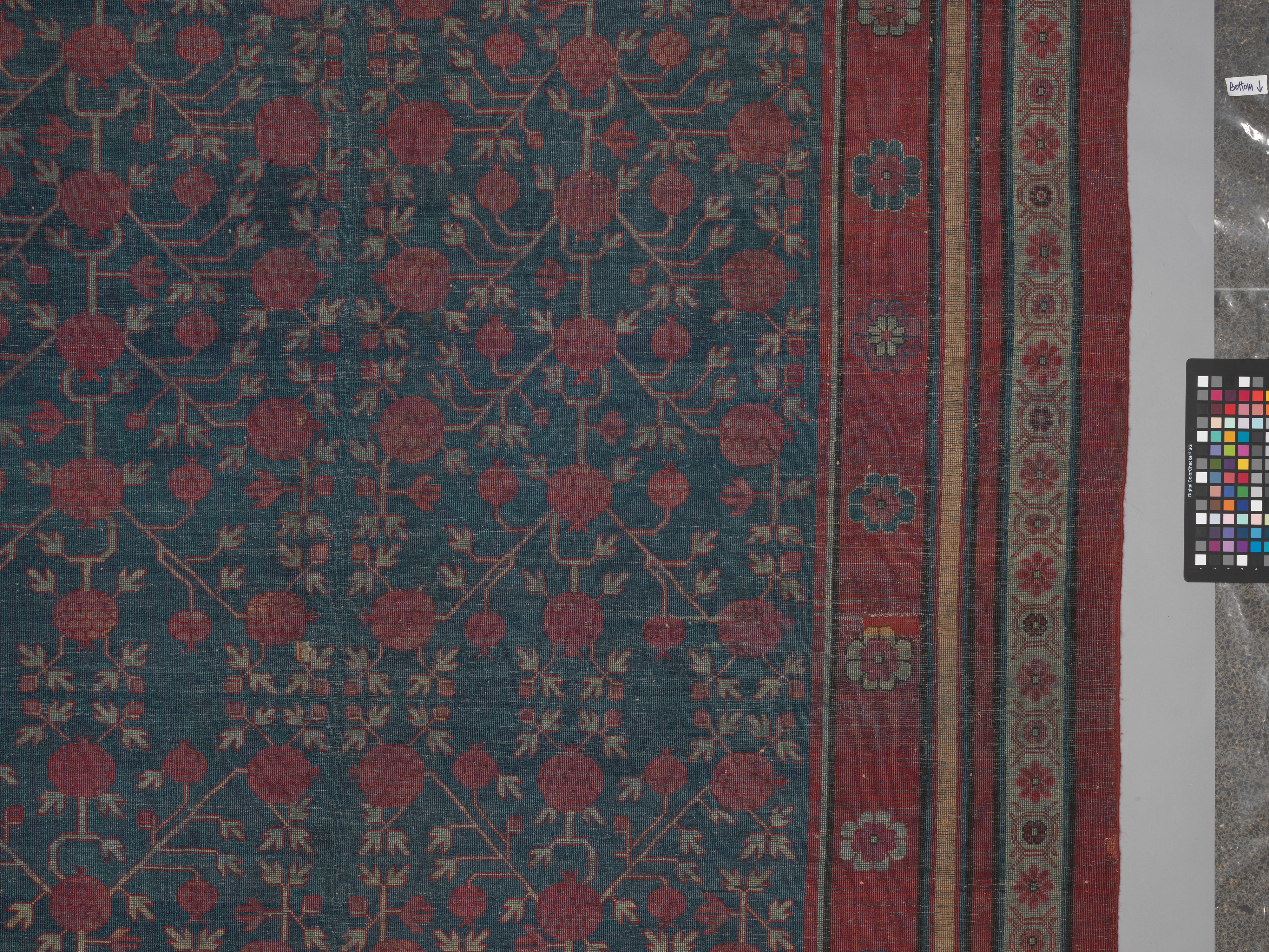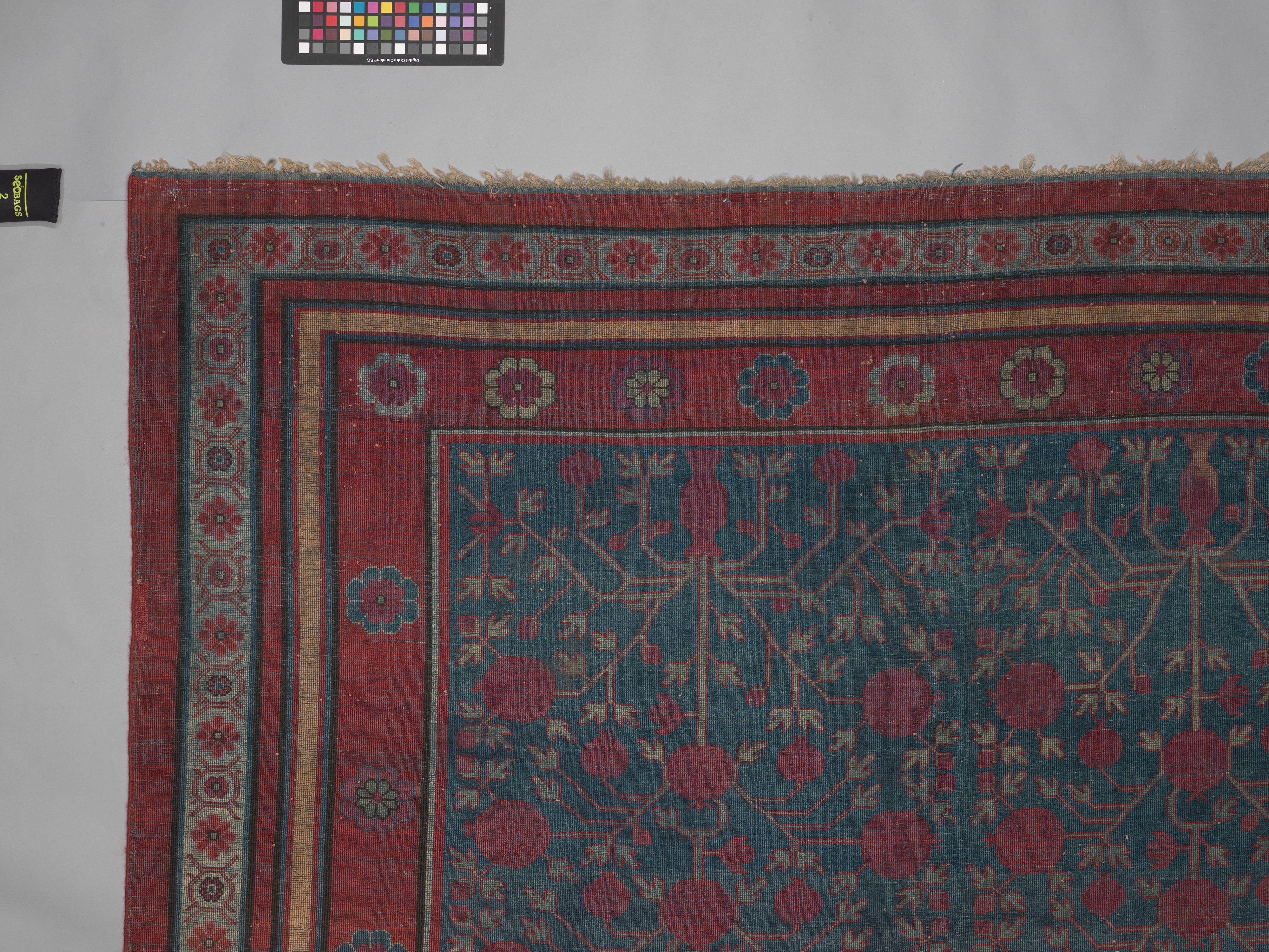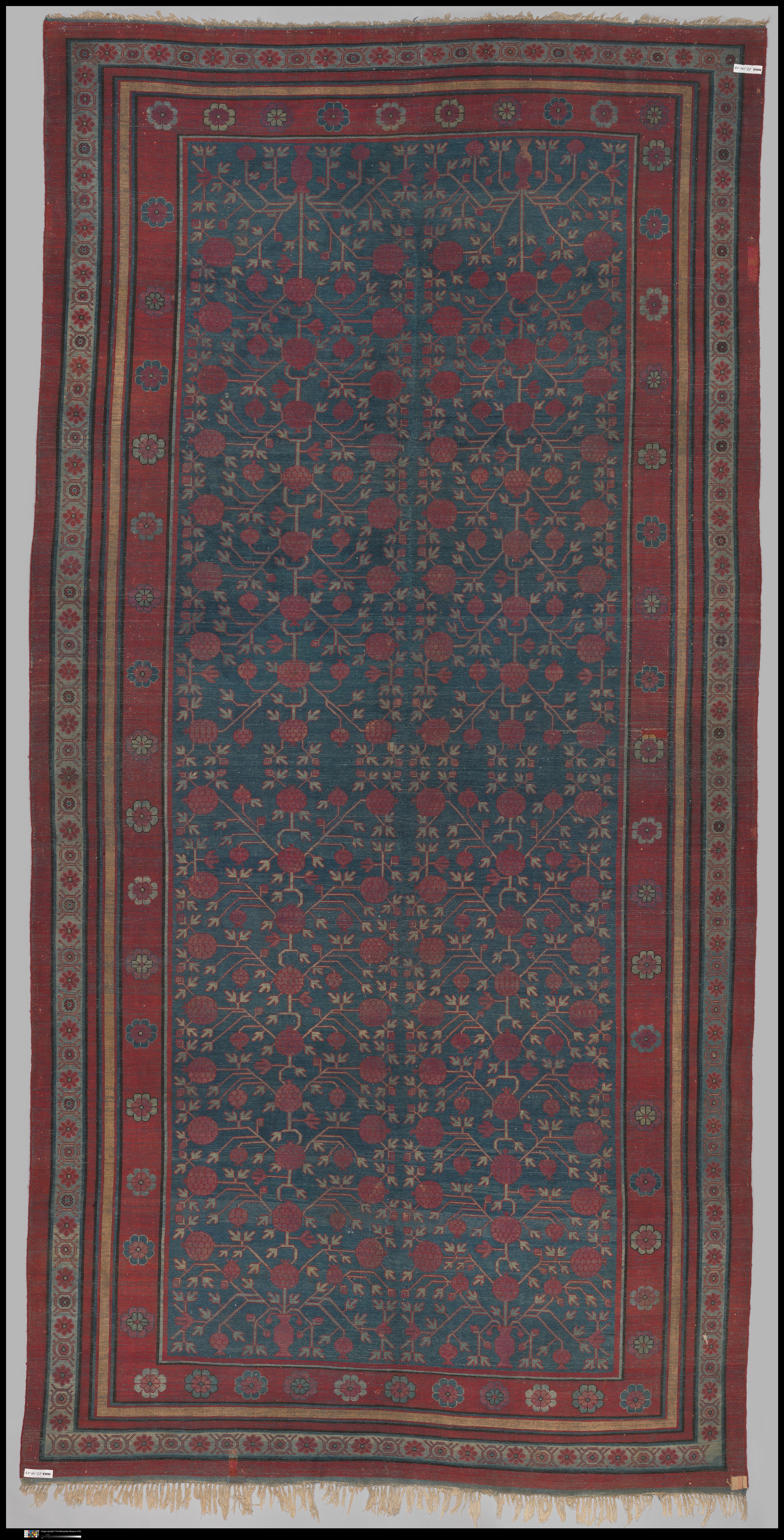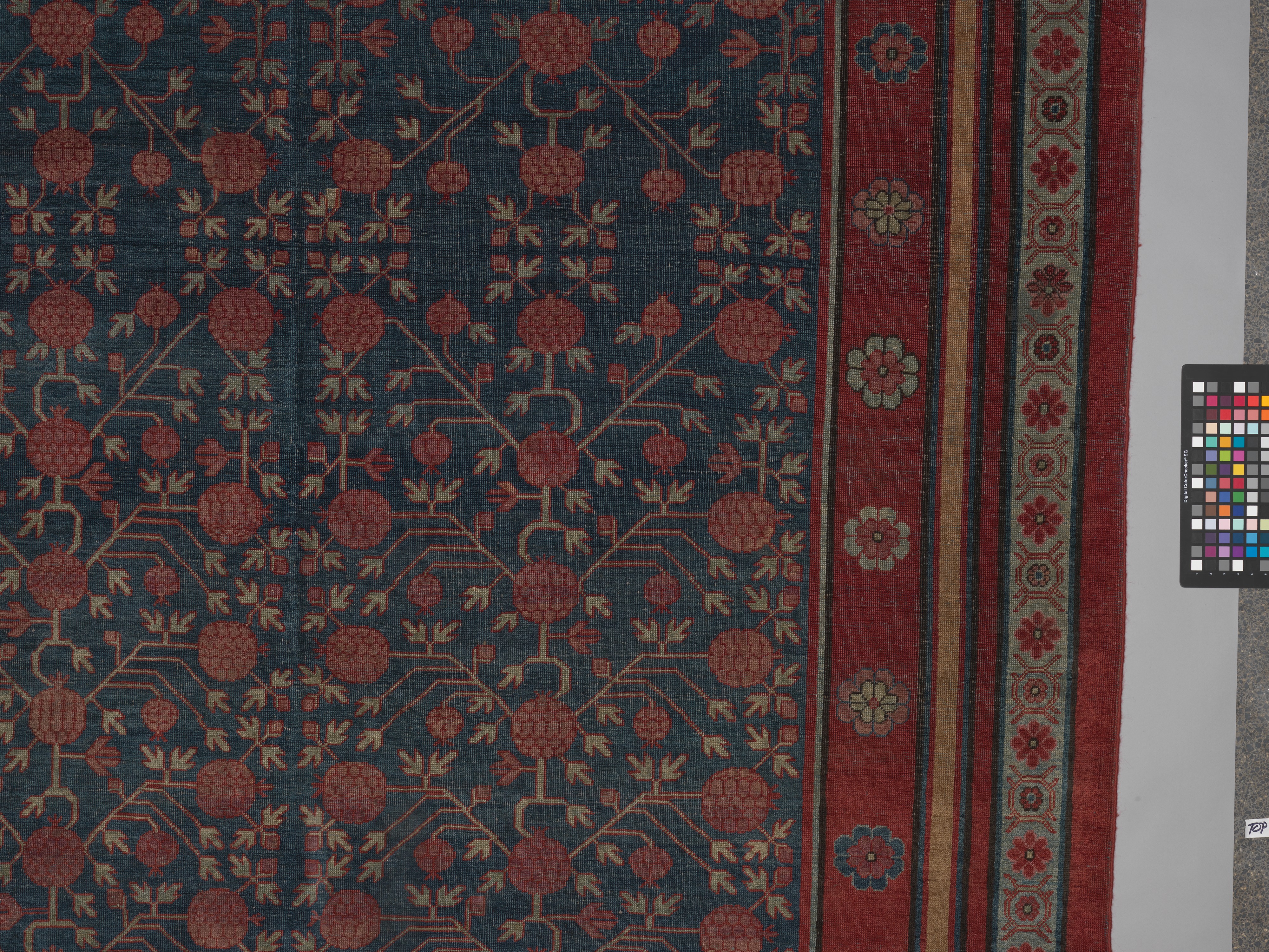Carpet
Not on view
Carpets woven in the former silk road settlements of Kashgar, Yarkand, and Khotan, situated at the western end of the Taklamakan Desert, display a mixture of patterns and styles. Chinese influence can be seen in the palette–with emphasis on deep red, blue, and yellow–and in some patterns, particularly those of the borders. Field patterns typically draw from Iranian or Central Asian Turkic or even Mughal Indian traditions. The knot type is the asymmetrical knot favored in Iran. This rug bears one of the more popular patterns found in these carpets, the vase and pomegranate design, here arranged in four units repeated to fill the large field.
Due to rights restrictions, this image cannot be enlarged, viewed at full screen, or downloaded.
This artwork is meant to be viewed from right to left. Scroll left to view more.


